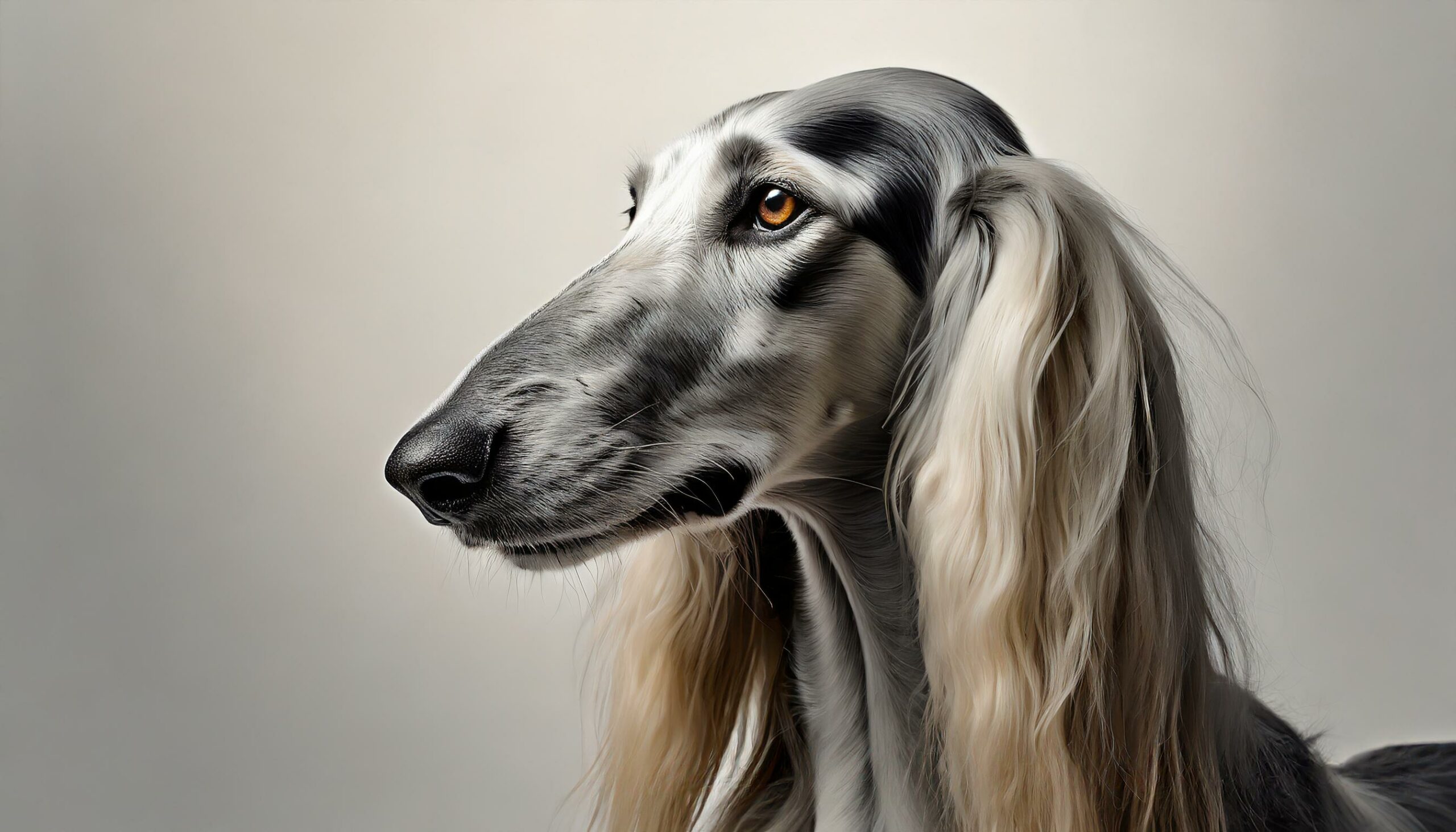The Afghan Hound, with its majestic appearance and aristocratic demeanor, is one of the most easily recognizable and ancient dog breeds. Known for its elegant beauty, long, silky coat, and distinctive ringtail, this breed exudes an air of dignity and aloofness. Originating from the mountainous regions of Afghanistan, where it was bred for its hunting prowess, the Afghan Hound has transitioned seamlessly into the show ring and family homes, captivating hearts with its graceful movements and independent spirit.
Origins and History
The Afghan Hound’s lineage dates back thousands of years, with its ancestors believed to have been present in the regions of Afghanistan, Pakistan, and northern India. These dogs were highly valued by nobles and royalty for their abilities to hunt large game over rugged terrain, utilizing their keen sight and remarkable speed. The breed’s isolation in the Afghan mountains helped preserve its purity for centuries, with the Western world only discovering its existence in the late 19th century. The Afghan Hound was officially recognized by the American Kennel Club (AKC) in 1926, and its exotic appearance quickly made it a favorite in dog shows and among dog enthusiasts.
Physical Characteristics
The Afghan Hound stands tall at 25 to 27 inches for males and 24 to 26 inches for females, with a slender yet powerful build that speaks to its heritage as a hunter. The breed’s most notable feature is its long, flowing coat, which comes in a variety of colors and requires regular grooming to maintain its luxurious texture. The Afghan Hound’s head is crowned with a topknot of silky hair, and its dark, almond-shaped eyes convey an expression of nobility and mystery. Its high hipbones and unique ringtail add to its distinctive silhouette.
Temperament and Personality
Despite its regal appearance, the Afghan Hound possesses a playful and affectionate nature, often forming strong bonds with its family. The breed is known for its independence and can sometimes appear aloof, especially with strangers. Afghan Hounds are intelligent but may exhibit a cat-like demeanor, choosing to engage on their own terms. They retain a strong hunting instinct, which can be channeled through activities such as lure coursing. Early socialization and patient training are essential to nurture their gentle temperament and ensure they become well-adjusted companions.
Health and Care
The Afghan Hound is generally a healthy breed, with a life expectancy of 12 to 18 years. They are susceptible to certain genetic health issues, including hip dysplasia and cataracts. A balanced diet, regular exercise, and routine veterinary care are vital for their well-being. The breed’s long coat requires extensive grooming to prevent mats and tangles, making coat care a significant commitment for Afghan Hound owners.
Ideal Home Environment
The Afghan Hound thrives in environments where it can receive plenty of exercise and space to run. They are best suited for homes with securely fenced yards, where they can safely explore and play. While they can adapt to various living situations, their exercise and grooming needs make them a better fit for experienced dog owners who can dedicate the time and resources to their care. The Afghan Hound’s sensitive nature makes it a loyal and loving companion, ideally suited for families and individuals who appreciate the breed’s unique characteristics and can provide a nurturing home.
Conclusion
The Afghan Hound stands as a symbol of elegance and mystery, offering a unique blend of beauty, grace, and loyalty. This ancient breed, with its distinctive appearance and noble spirit, continues to enchant and captivate dog lovers around the world. For those willing to embrace the challenges of grooming and training, the Afghan Hound promises a rewarding companionship, filled with affection, playfulness, and an enduring bond.
